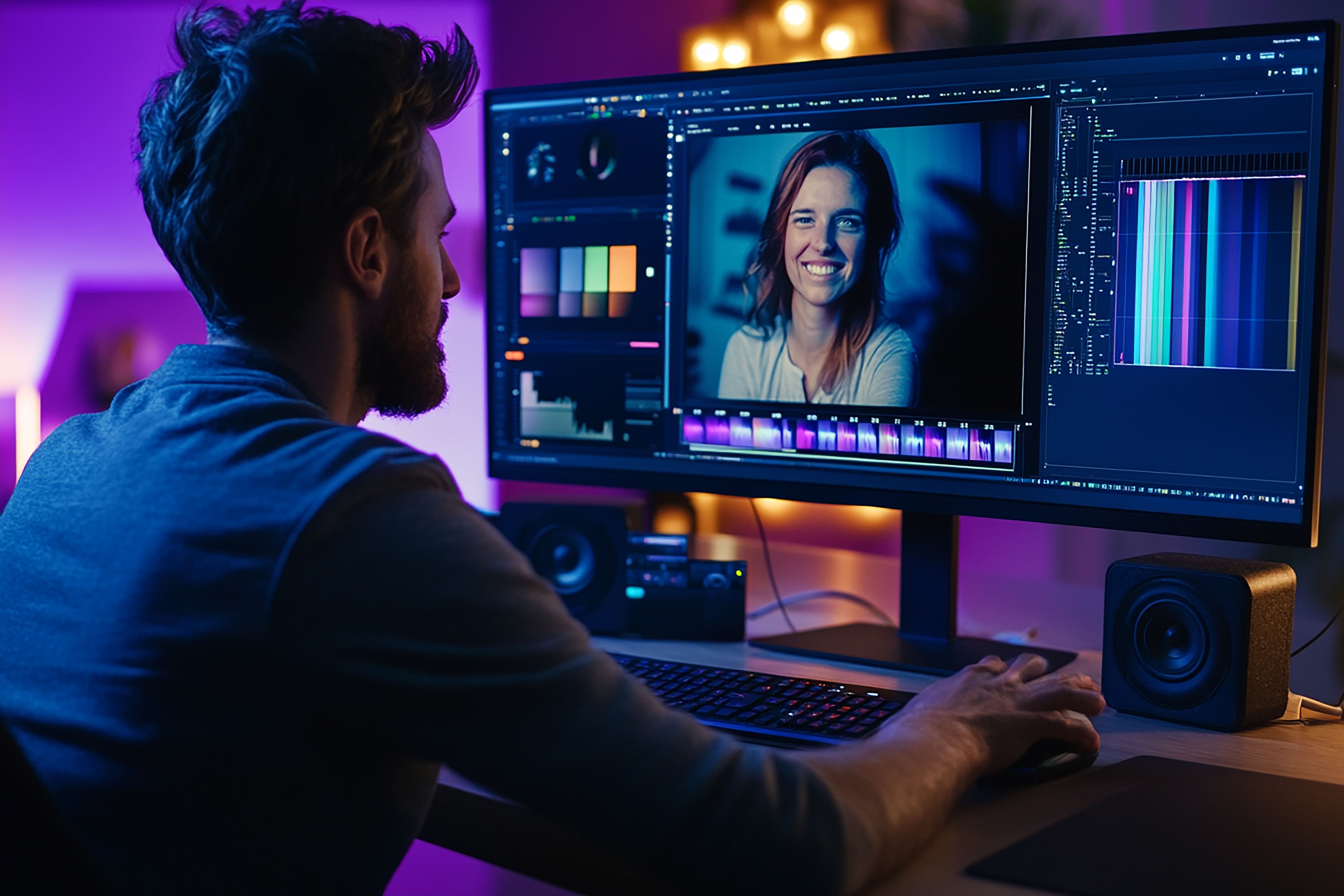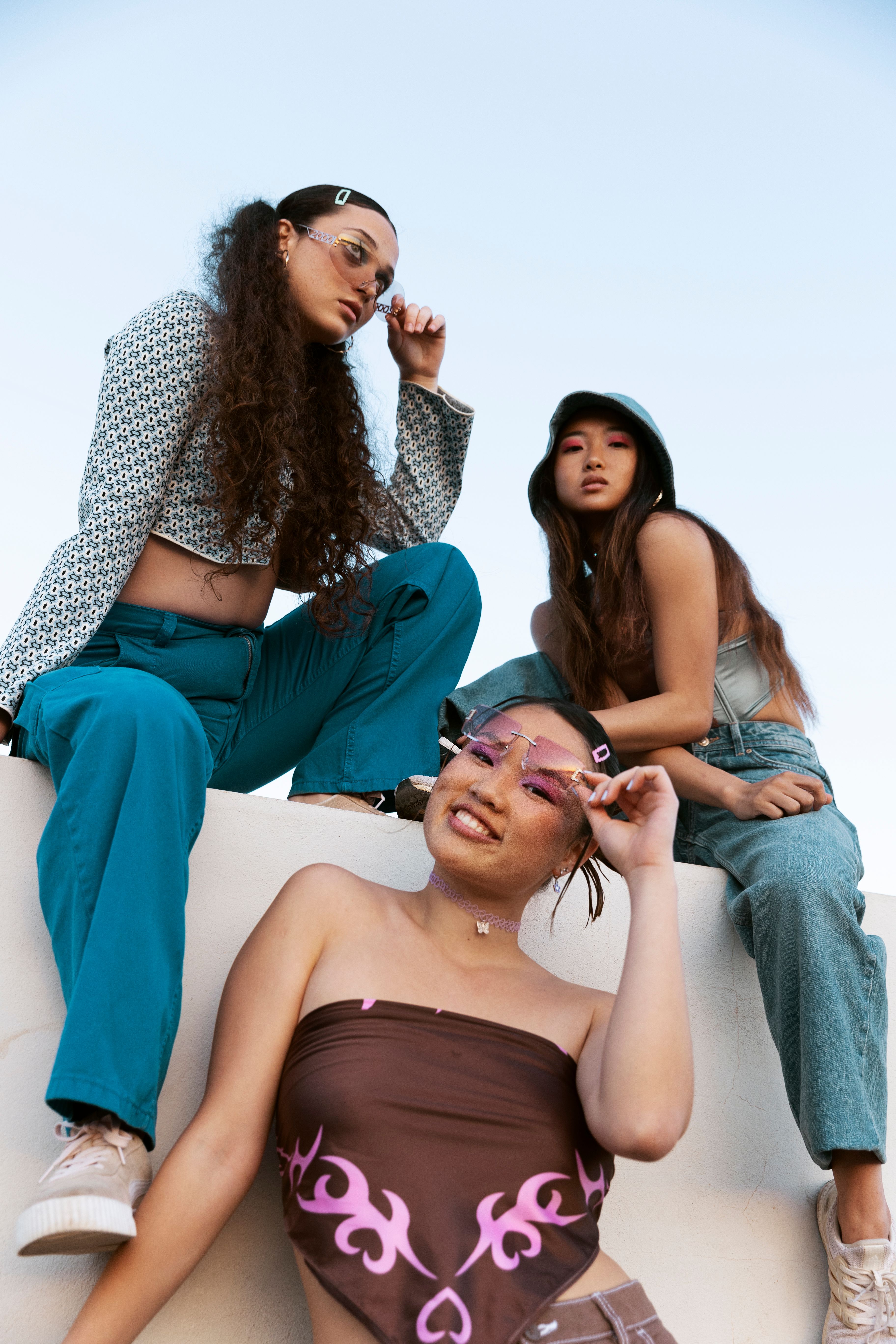How Fashion Inspiration Evolves Through Social Media
AI Video Editing Tools: Smarter Content Creation in 2025


Introduction
In the age of reels, shorts, and video-first content, editing has become the bottleneck for creators and brands alike. But what if AI could automate the entire video editing process—cutting clips, syncing music, adding captions, even creating highlights—at the click of a button?
Welcome to AI video editing in 2025: where artificial intelligence isn’t just speeding up workflows—it’s elevating storytelling. Whether you're a YouTuber, ecommerce brand, or digital marketer, AI video editing tools now help you deliver professional-quality content at scale, without touching a timeline.
AI video editing tools like Runway, Wisecut, Veed.io, and Pictory are changing the game by offering intuitive, fast, and intelligent features such as auto-cutting, transitions, subtitles, and branded exports. These platforms democratize high-quality content creation, making it accessible even to solo creators and startups.
Key Highlights
- AI video editors automatically cut, enhance, and stylize videos using machine learning.
- Best for creators, ecommerce, short-form content, product reels, and ads.
- Tools like Canva, InVideo, and Vizard lead the space with drag-and-drop, auto-captioning, and brand templating.
- AI editing enables faster campaign launches, consistent branding, and more engaging user journeys.
AI Video Editing Tools in 2025

Tool | Key Features | Best For | Unique Advantage |
| Runway | Text-to-video, object removal, green screen, motion tracking | Creators, filmmakers | Powerful Gen AI integrations |
| Pictory | Script-to-video, auto summarization, voice-over support | Marketers, educators | Converts blogs/webinars to video |
| Wisecut | AI audio syncing, auto cuts, subtitle generation | YouTubers, educators | AI-powered voice emphasis |
| Veed.io | Auto subtitles, translation, templates, screen recording | Solo creators, startups | Multi-language support + collaboration |
| InVideo | Templates, text overlays, voiceovers, stock library | Brands, ecommerce marketers | Ecom-friendly design and ease of use |
| Descript | Audio transcription, video editing via text, overdub voices | Podcasters, internal comms teams | Edit video like editing a Word doc |
| Vizard | Short-form AI clipping, social resizing, templates | Social media managers | Fast repurposing of long videos |
| Canva | Drag-and-drop editing, templates, stock assets, animation | Marketing teams, SMBs | All-in-one design + video editor |
How AI Video Editing Works
At its core, AI video editing uses machine learning and computer vision to automate manual editing tasks. These tools don’t just speed things up—they bring intelligent recommendations, predictive cropping, and personalized formatting to the table.
The Typical AI Video Editing Workflow
Step | Action |
| 1. Input Media | Upload raw footage, product shots, or script. |
| 2. AI Analysis | The tool detects scenes, faces, objects, silence, or movement. |
| 3. Smart Editing | AI auto-cuts dull segments, applies transitions, syncs background music. |
| 4. Branding Layer | Logo insertions, lower-thirds, intro/outro, and color grading happen automatically. |
| 5. Output & Variants | Video is exported in multiple aspect ratios—Reels, YouTube, or landscape. |
Example: Tools like Runway, Wisecut, and Pictory enable creators to generate polished, cut-ready videos in under 15 minutes.
Features That Define AI Video Editors in 2025
- Auto-captioning & voice transcription
- Auto-resizing for vertical, square, and landscape formats
- Emotion detection to pick expressive clips
- Smart highlights for product demo reels
- AI-enhanced audio cleaning and visual stabilization
- Context-aware B-roll suggestion
See how Glance uses Gen AI to automatically generate lookbooks and product stories as part of the fashion shopping journey.
Best Use Cases for AI Video Editing
AI video editing has evolved from a niche tool to a daily essential for creators, marketers, and ecommerce teams. In 2025, it’s redefining how branded videos, shoppable reels, and social content are produced at scale.
1. Ecommerce Product Reels & Fashion Drops
- Turn static product images into motion-rich reels with transitions, overlays, and branding.
- Auto-generate size guides, styling tips, and demo sequences using templates.
- Repurpose catalog shoots into dozens of Instagram and YouTube Shorts in seconds.
Glance AI uses these techniques to help users visualize personalized outfit combinations via AI-generated lookbooks. Learn how Glance AI is transforming fashion discovery.
2. Social Media Content Creation
AI editing platforms like Veed.io, Kapwing, and Pictory are empowering solo creators and microbrands with:
- Smart cuts based on audience retention patterns
- AI voice sync and subtitles for silent scrolling
- Automatic resizing for TikTok, Reels, Pinterest, and Shorts
Result: More content, faster production cycles, and better reach across platforms.
3. Ad Creatives for Performance Campaigns
Create and test multiple ad variants from a single video asset. AI tools allow:
- Automated CTA placement
- Thumbnail A/B testing
- Dynamic editing based on hook effectiveness or engagement history
For Indian D2C brands, this drastically lowers cost-per-creative across Meta Ads and Google PMAX.
4. Customer Testimonials & Influencer Videos
AI can:
- Remove pauses or filler words
- Add animated subtitles and emphasis effects
- Brand-align visual tone, fonts, and filters
Useful for brands leveraging UGC (user-generated content) at scale—especially in beauty, fitness, and fashion categories.
5. Content Repurposing Across Platforms
AI editing tools can:
- Convert webinars into bite-sized social clips
- Turn blog posts into narrated visual explainers
- Auto-generate teaser reels for product launches or events
Example: A blog on AI shopping trends can be auto-edited into a 30-sec social video with animated stats and a CTA to download the whitepaper.
Key Benefits of Using AI for Video Editing
AI isn’t just speeding up post-production—it’s redefining how brands, influencers, and marketers scale creativity. Here are the core benefits of using AI for video editing in 2025:
1. Faster Video Turnaround Time
AI can reduce hours of manual editing to minutes. Key time-savers include:
- Auto-cutting dead air or silence
- Instant subtitle generation
- Smart transitions and audio balancing
Result: Quicker content cycles for fast-moving industries like fashion, events, and product drops.
2. Multiformat Output for Omnichannel Reach
AI editing tools allow you to export:
- Vertical videos for Reels and Shorts
- Square videos for Instagram and Pinterest
- Horizontal videos for YouTube and Connected TVs
- Brands using Glance on connected TVs can format video content for ambient discovery and lean-back engagement.
3. Consistent Brand Styling
Pre-set templates ensure every video adheres to:
- Brand color palettes
- Font hierarchies
- Logo placements and intros/outros
This helps ecommerce brands and D2C players maintain a cohesive identity—even across hundreds of videos.
4. Cost-Efficient Creative Production
No need for expensive editing suites or agency retainers. AI replaces:
- Video editors for short-form content
- Subtitling tools
- Audio mixers and animators (for basic needs)
Especially useful for emerging creators and lean startups scaling content on a budget.
5. Localized & Personalized Editing
AI supports multi-language subtitles, voice tracks, and even audience-specific edits. Tailor campaigns for:
- Tier 2/3 Indian markets
- Personalized ads by gender, geography, or style
- Regional fashion weeks or influencer-led drops
This aligns with Glance’s personalization stack for visual commerce and body-type-inclusive recommendations.
Limitations of AI Video Editing
AI video editing has made massive strides—but it's not a magic wand. There are still real creative and operational limits to what these tools can do without human involvement.
1. Template-Driven Outputs Feel Generic
Many AI editors rely on fixed templates. This often leads to:
- Repetitive visual styles
- Overused transitions or fonts
- Content fatigue, especially on social platforms
Tip: Use AI for first drafts, but customize templates to maintain uniqueness and brand authenticity.
2. Limited Control for Advanced Creatives
AI excels at basic edits—cuts, captions, overlays—but struggles with:
- Complex visual storytelling
- Cinematic pacing or dramatic tone shifts
- Layered motion graphics
Professional editors still outperform AI in high-production environments like fashion films, documentaries, and brand storytelling.
3. Misinterpretation of Context or Emotion
AI can misjudge:
- Sarcasm, humor, or irony
- Cultural nuances in regional campaigns
- Emotionally charged scenes
For fashion and lifestyle brands focused on emotional connection, human review is essential.
4. Quality Depends Heavily on Input
Poorly lit footage, weak audio, or messy B-roll limits AI’s effectiveness. Garbage in still means garbage out—even with automation.
Always feed clean, high-quality source material for best results.
5. Legal and Ethical Considerations
Some tools use AI-generated actors, stock music, or templates that come with usage rights restrictions. Brands must verify:
- Licensing rights
- Consent for likeness (in case of avatars)
- Copyright status of templates or audio
Related: How Glance navigates ethical AI use in commerce
Conclusion: AI Video Editing Tools Are Redefining the Content Game
AI video editing tools are no longer futuristic—they’re foundational to modern content workflows. In 2025, brands, creators, and marketers are using these platforms to create high-quality, on-brand videos faster and more affordably.
These tools streamline editing, reduce cost, and ensure brand consistency across platforms. But creativity and human judgment still play a crucial role. Whether you're a YouTuber, an ecommerce seller, or a startup founder, combining AI efficiency with human insight is the key to standing out.
Glance AI is a great example of this hybrid model—using Gen AI not just for fashion styling, but also to auto-generate video lookbooks and brand stories, enhancing the shopping journey through engaging visual storytelling.
Explore how Glance AI blends content and commerce.
FAQs: AI Video Editing in 2025
1. What is AI video editing?
It’s the use of artificial intelligence tools to automate video editing tasks like cutting clips, adding subtitles, syncing audio, and formatting output for various platforms.
2. Which are the top AI video editing tools in 2025?
Leading tools include Runway, Veed.io, Pictory, InVideo, and Descript—each offering unique features like avatar editors, prompt-based editing, and auto-captioning.
3. Can AI edit videos in multiple formats automatically?
Yes. Most AI tools can export videos in vertical, square, and landscape formats tailored to social and OTT platforms.
4. Is AI editing suitable for ecommerce videos?
Absolutely. AI editors are ideal for product reels, shoppable videos, influencer edits, and campaign variants at scale.
5. Will AI replace human video editors?
No. It will augment human editors—helping with speed and structure—while humans still drive story, emotion, and brand nuance.




